When I was a young mother there was no such thing as healthful bars of any kind, let alone nutrition bars! These days, there are a million different ones available at health food stores, drug stores, and even gas stations. Different bars fit different diet trends: Paleo; high protein/low sugar; athletic fuel (high carb); gluten free; whole foods; raw foods; macrobiotic; etc. It’s amazing how much the bar market has evolved since the 1970s, when I started paying attention to food and nutrition!
People of all dietary needs and preferences have come to rely on bars as an easy way to get some nutrition while on the run. My son, Graham, is a personal trainer. Through talking with him and spending time at the gym myself, I’ve learned that a lot of fitness-oriented people love bars. And I see why—if you eat the right bar after a workout, you feel great.
Since nutrition bars are so popular, we asked you, our readers, which bars you wanted us to review. Then I went and did some ingredient research and taste testing. If bars are a regular part of your diet (and/or your kids’), read on to learn which ones are Good Stuff, Okay Stuff, Sneaky Stuff, and just plain Bad Stuff. (Oh, and if you want to make bars yourself, here’s my favorite recipe.)
Bad Bar Ingredients to Avoid
As you probably guessed, there’s a lot of questionable stuff out there in the nutrition bar world. Here are some of the ingredients that raise red flags for me:
- Soy ingredients are popular in many nutrition bars as a source of protein (like soy protein isolate) and product-enhancing additives (like soy lecithin). Soy is problematic for many reasons: non-organic soy is likely genetically modified; many soy ingredients are highly processed; soy can be estrogenic; soy can be difficult to digest; and soy is a common allergen. I avoid soy except in some traditional forms, like tempeh and miso, and I recommend that you avoid the more processed, modern versions of it, especially if they’re not organic.
- Non-organic dairy, eggs, and meat, which are all sources of ingredients you can find in many bars, are problematic because conventionally raised animals are typically exposed to higher levels of agricultural chemicals, environmental toxins, hormones, and antibiotics.
- Peanut plants are really good at taking up toxins from soil, so non-organic peanuts (and ingredients derived from them, like peanut butter and peanut flour, which you’ll find in many bars), are usually more toxic than their organic counterparts.
- Casein and casein derivatives (like calcium caseinate and sodium caseinate) are cheap, highly processed and readily available sources of milk-derived protein. They can be contaminated from the source (see non-organic dairy, above) and processing. Also, high levels of these proteins can interfere with mineral absorption in the body.
- Added sweeteners, like corn syrup, are often highly refined, meaning they add sugar without any redeeming nutrients.
- Maltodextrin is a common carbohydrate in mainstream sports nutrition products because it’s technically a complex carb, but can be absorbed quickly, giving the body an energy boost. It’s also cheap and readily available. I don’t like it because it’s highly processed, can be derived from problematic sources (like wheat or corn), acts like more refined sugars in the body, causes digestive problems in some people, and can actually have dehydrating effects (which is exactly what it’s not supposed to do).
- Artificial sweeteners like sucralose (Splenda) have a lot of negative research data against them, and the ones that have been around the longest tend to have the worst reputation. But there’s also “evidence” to defend their continued use in foods. I know people who are sensitive to artificial sweeteners– they get headaches from even the smallest doses—and that’s evidence enough for me to avoid them and suggest that you and your kids do the same. Like sugar alcohols (below), artificial sweeteners are also problematic because they can make sugar cravings worse– because you aren’t digesting real sugar, your brain isn’t getting satiety cues, so the sugar craving rages on.
- Sugar alcohols like xylitol, maltitol and erythritol are supposed to be safer, more natural alternatives to artificial sweeteners—they provide sweetness with few calories and are derived from natural sources. But of course you can’t have your cake and eat it, too! Sugar alcohols are often highly processed, can cause digestive problems and headaches, and they can backfire by perpetuating sugar cravings. They can also induce an insulin response just like regular sugars.
- Added oils are often of poor quality, and one of the more common oils—canola—is extra problematic. Non-organic canola is usually genetically modified. Even organic canola oil is the product of a lot of processing, involving chemicals and high temperatures that can compromise the fatty acids, even hydrogenating some.
- “Natural” flavors are often anything but natural, even if they’re organic! They are usually highly processed and can have a lot of concerning additives that are not listed separately. Be especially wary of bars with flavors that are trying to mimic other foods, like cookies, cakes, and pies.
- Added vitamins and minerals are common in bars that are trying to seem more nutritious than they really are, and they’re usually of unknown origin and quality. Many added nutrients can’t even be absorbed by our bodies. You’re best off getting vitamins and minerals from whole food sources. (Here’s more on my feelings about vitamins.)
Good Bar Ingredients to Look For
The best bars are basically those you could make in your kitchen with ingredients that are readily available at your local grocery or health food store. When I was reviewing ingredients, I looked for:
- Real, whole foods like nuts, seeds, and meat (popular in some of the Paleo friendly bars).
- Organic and non-GMO ingredients, especially when it comes to peanuts and animal-based ingredients.
- Carbohydrates from whole-food ingredients like grains, nuts, and fruit.
- Added sweeteners should be as unrefined and high-nutrient as possible, like coconut sugar and honey.


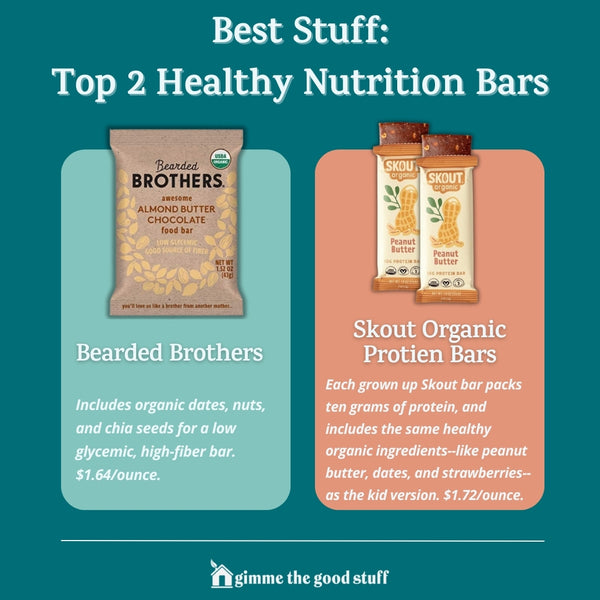
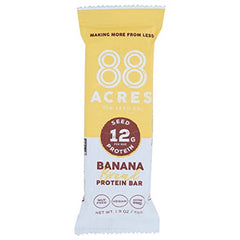
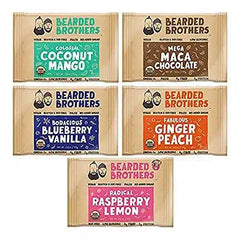
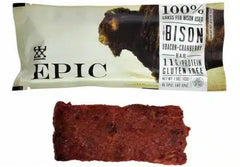
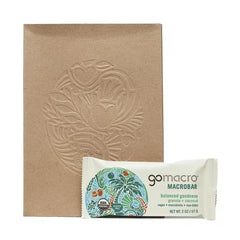
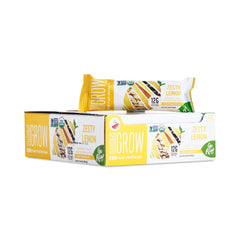
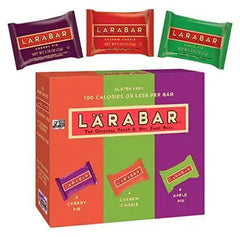
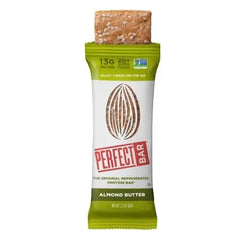

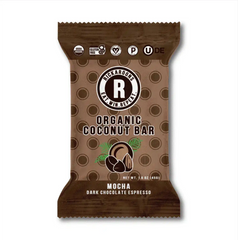
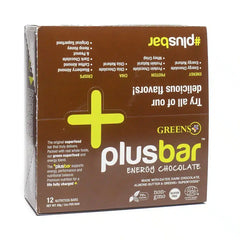
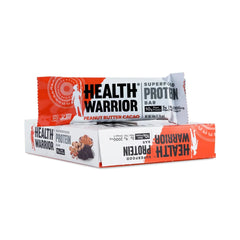

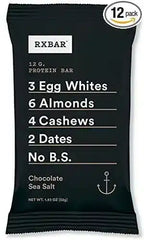



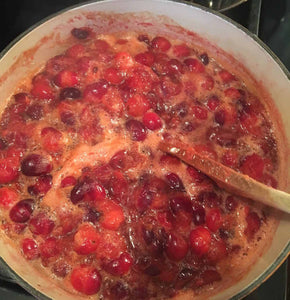
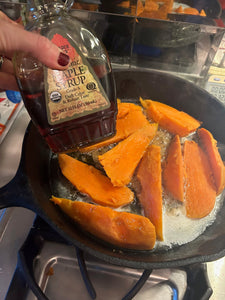





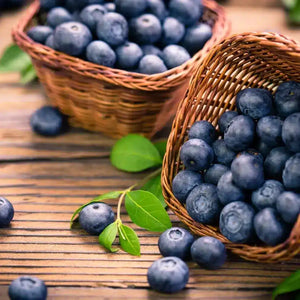



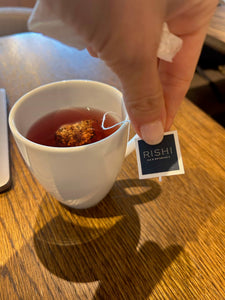
36 comments
Daddy pig
Daddy,
I like kind bars cause they have gooooood stuff in it
Daddy pig
Daddy
j nicole
Thank you for reviewing all of these bars!! I like to switch up my “go-to quick snacks” and rarely take time to do this much needed research beforehand. Next thing you know, I find myself in the mood for change and it’s out with ol’ faithful and in with little sneaky snacks! …Time to stop grabbing kind bars and lenny and larry bars while I’m waiting for my car at the wash (guilty smirk).
Also, have you guys (or readers!) shared any homemade recipes for snack bars? I have tried so many terrible recipes on pinterest and would love a recommendation! Thank you!Kelly T.
What are your thoughts on Organic Aussie Bites? Ingredients are: Organic Rolled Oats, Organic Oat Flour, Organic Unsalted Butter, Organic Expeller Pressed Canola Oil, Organic Dried Apricots, Organic Sugar, Organic Cane and Invert Sugar, Organic Raisins, Organic Flax Seeds, Organic Honey, Organic Shredded Coconut, Organic Quinoa, Organic Chia Seeds, Sea Salt, Baking Soda, Organic Vanilla.
Suzanne Weaver-Goss
Hi Lenka, The Vega bar is plant based and that’s an important component for vegans. However, many of these bars have a fair amount of sugar. The meal bar has 18 grams, the protein bar, 12 grams, and the snack bar has the least with 7 grams. The sugar is not from fruit (except for one did have dates) most of the sugar is from cane sugar, agave and tapioca. Also,the list of ingredients is long so to me that’s a lot of processed ingredients. I prefer to eat food closer to it’s natural state. I am not a big fan of bars because of that but at least the ones that are just fruit and nuts are food that I can recognize. Certainly as an occasional snack or in a pinch these are fine but I wouldn’t recommend them daily.
Lenka Glassman
What do you think about the VEGA line of bars? I really love them but have a feeling they could be sneaky stuff!
Rita Walden
What do you think about, Marigold bars, and, Papa Steves bars?
Suzanne Weaver-Goss
The ingredients look fine but they do have Agave and some have sugar cane. And if you look at the grams of sugar, they have around 15 to 20 grams which is a lot when it’s from Agave or sugar. They are more like a sweetened cookie or candy. There are other bars that are just fruit and nuts.
Daniella
Have you looked at Pure Organic? They sell them at Thrive Market and they look pretty good! Would love to hear your thoughts.
Lisa
Hello again, just wondering if you could comment on these bars, thanks!